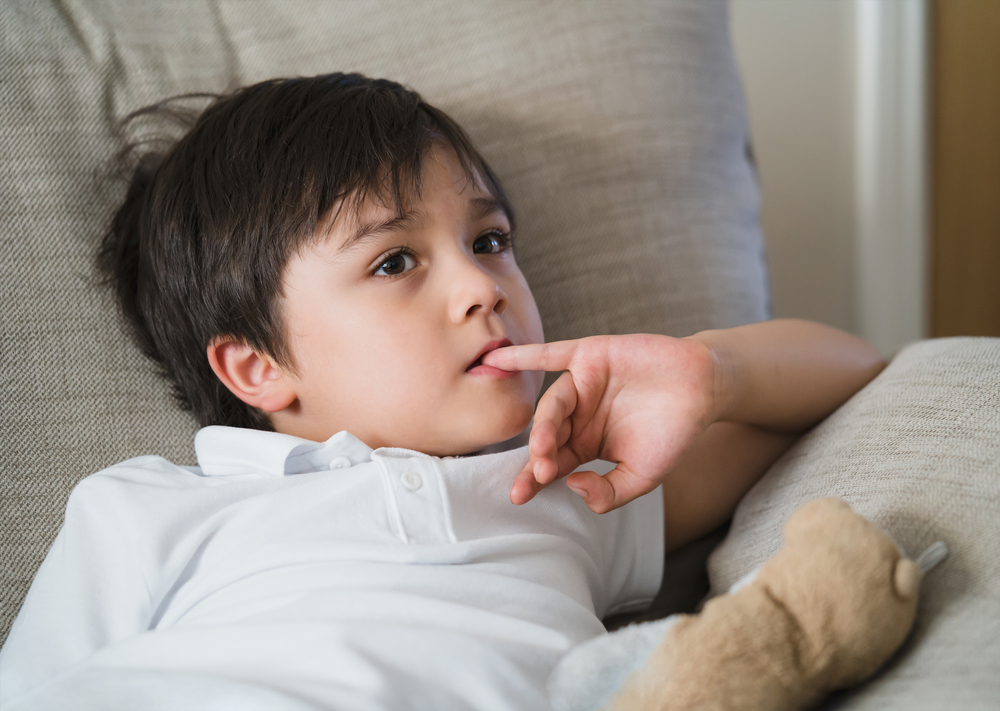
Problems Caused by Nail Biting in Children and How to Treat Them
Nail Biting
Nail biting is a common habit in children, but it’s more than just a nervous tick. It often starts early and can continue unnoticed until it starts to affect your child’s teeth, nails, and even their jaw. Most children don’t realize they’re doing it, and many parents don’t know when to intervene.
You might think nail biting is harmless, but it can actually lead to dental and health issues. The pressure of biting can move teeth, damage the nails, and expose the mouth to bacteria. If your child bites their nails often, it’s worth paying attention to how it might be affecting their health.
Even though nail biting may seem like a phase, the damage it causes can last longer than the habit itself. It’s important to recognize the signs early and decide if action is needed to protect your child’s teeth and overall well-being.
Problems Caused by Nail Biting in Children
Nail biting doesn’t just affect your child’s appearance—it can create real dental and physical problems. This habit puts stress on developing teeth and soft tissues and exposes your child to avoidable risks.
- Tooth chipping or cracks
- Tooth misalignment
- Oral infections
- Nail and cuticle damage
- Jaw tension or discomfort
1. Tooth Chipping or Cracks
When children bite their nails, the constant pressure can chip or crack their teeth. This usually happens in the front teeth, where the nail repeatedly presses against the enamel. Although teeth are strong, they’re not designed to handle this type of force over time. Chipped teeth can lead to sensitivity, pain, and the need for dental repairs that aren’t always easy for kids to tolerate.
2. Tooth Misalignment
Nail biting can slowly push teeth out of place. Each time your child bites down on a nail, especially if they do it daily, they put uneven pressure on their teeth. This can cause teeth to shift or crowd, leading to bite problems that often require braces later. Misalignment also affects how your child chews and speaks, which can create more challenges as they grow.
3. Oral Infections
Nails carry bacteria, even if your child washes their hands often. When they bite their nails, bacteria enter the mouth and can cause gum irritation or infection. Tiny cuts in the gumline or inside the cheeks can let germs in and make the problem worse. These infections can be painful and may require treatment with antibiotics or dental care.
4. Nail and Cuticle Damage
Frequent nail biting tears at the skin around the nails, often causing swelling, redness, or bleeding. This damage makes it harder for nails to grow properly and can cause painful hangnails or infections. Kids may not notice the pain right away, but you’ll likely see inflamed fingers or nails that look uneven or damaged.
5. Jaw Tension or Discomfort
Biting nails over and over forces the jaw muscles to stay tight for long periods. This strain can lead to soreness in the jaw, headaches, or even pain while chewing. Some children might start grinding their teeth as a result, which adds to the pressure on their teeth and jaw. Over time, this tension can cause long-term discomfort or misalignment in the jaw joint.
Should You Treat Your Child’s Nail Biting?
Parents should consider treating nail biting when the habit continues beyond age five, causes visible damage, or starts to affect the child’s teeth or jaw. Occasional nail biting may fade on its own, but frequent or aggressive biting usually doesn’t stop without help. Watch for signs like swollen cuticles, cracked teeth, or complaints of jaw pain—these suggest the habit is no longer harmless.
Early intervention helps prevent more serious problems from developing. If nail biting becomes a way for the child to manage stress or boredom, it may become deeply ingrained. When physical damage appears or the habit interferes with daily activities, it’s time to take action.
How Do You Treat Nail Biting?
Treatment starts at home with simple behavioural approaches. Parents can remind the child to stop biting, offer alternatives like a fidget toy, or use positive reinforcement. Nail polish with a bitter taste is another option, helping the child become more aware of the habit. Consistency and encouragement matter more than punishment.
A dentist may recommend a habit breaking appliance if home strategies don’t work or if dental damage has already begun. These devices are custom-made and attached to the child’s upper teeth. They stop the physical motion of biting and help break the cycle. Appliances are especially useful when nail biting has started to shift teeth or strain the jaw.
See our guide on
Types of Habit Breaking Appliances and Their Cost
Can Dental and Jaw Issues from Nail Biting Be Reversed? – Yes
Many of the issues caused by nail biting can be reversed, especially when treated early. If teeth have shifted slightly, they may move back into place on their own once the habit stops—particularly if the child still has baby teeth. Gum irritation and nail damage usually heal with time and care.
For more advanced problems, professional orthodontic treatment helps guide recovery. Dentists can repair chipped teeth, correct bite alignment, and use appliances to stop the habit. In some cases, orthodontic treatment may be needed to realign permanent teeth. Jaw pain or muscle tension often improves once the biting stops and the jaw gets time to relax. Regular checkups help track progress and adjust treatment as needed.
Kids Dental Group Can Help with Nail Biting
We understand how frustrating it can be to watch your child struggle with nail biting, especially when it starts affecting their health. At Kids Dental Group, we work with families every day to break habits gently and effectively, using both home strategies and custom dental solutions.
If you’re concerned about your child’s nail biting, we invite you to contact us for a free consultation. We’ll take the time to assess their needs and guide you through the next steps.
We’re here to help in Richmond Hill, Markham, Stouffville, and Hillcrest.
Contact us today
